
Or is it the other way around? Every so often, I receive queries in my mailbox asking about various topics. Today, I was asked a question about the path that I took and how it affected my life's work:
"I am a freshman at Brigham Young University Idaho, and I've wanted to be an artist all my life. However I've never had any problems with math or science and love problem solving. My brother informed me that I might look into engineering rather than art. I really do like the idea however here is the problem, I LOVE ART, and I don't know what field of engineering I could go into that would involve both. How did you get started? Was it as an artist or an engineer? I really need some advice. Please help."
Often an interesting conundrum. Interesting enough that I decided to answer as a blog post, so that many folks might benefit.
Which came first, the chicken or the egg?
I "started out" in engineering, but I originally wanted to do art. A counselor said that I couldn't make a good living doing art and suggested that I find another vocation to pursue. I looked around and opted to take a course in Mechanical Drawing (drafting) and Descriptive Geometry, part of the engineering curriculum, as it would still allow working in imagery but in a mainstream (read: "accepted") field.
I knew I could hold an object in my head, flipping it around to see it from any angle. I knew I understood mechanics and physics. Combining those two, I can see a machine working from the inside; "feel" the forces on each component as it runs. Being able to translate those to visual communication may be valuable, so I went for that. I found it fun and won a couple of bets on whether I had drawn a particular auxiliary view of an object correctly. If they were being stubborn, to prove it, I made a model. Pay up.
Back then, new cars were a Big Deal. The designs changed significantly from year to year, such that the first transporters delivering new models to the showrooms had the cars covered to keep them from view before announcement day. This excited me no end. I had visions of going to General Motors Institute and working in the Design Center on futuristic cars.
 Life takes you in other directions, however. Not that this was necessarily a bad thing—I've been fortunate to have done some Really Cool Stuff, go some Really Cool Places and meet & work with some Really Cool People; all because of what I can do and who I am.
Life takes you in other directions, however. Not that this was necessarily a bad thing—I've been fortunate to have done some Really Cool Stuff, go some Really Cool Places and meet & work with some Really Cool People; all because of what I can do and who I am.
Just when I thought it was safe to go back into the office...
While working in the engineering field years later, art came back; slowly at first. I had never really gotten the chance to do anything with it before I was diverted, so was pretty bad. Maybe that was the reason my counselor suggested I do something else, I don't know, but I soon realized that art hadn't gone away; it had only been dormant. Some things are not to be denied—especially how you happen to be wired. Rather than eschewing one for the other, as I was counseled to do earlier, I combined them further still.
I'm very logical; some would say to a fault. How can a "logical" person be an artist? Convention says that it's not probable. Maybe so—but possible it is. I approached art from a scientific perspective, not to make a pun. Got all kinds of media and materials, tested them all and noted my findings as to that which worked, that which worked in unexpected ways and that which failed miserably and, sometimes, spectacularly. Not your normal vision of how an artist works, is it?
Some of the best engineers I know are artists in the way that they approach their craft; whether they realize it or not. They think about their machine in a fluid or abstract way, while weighing possibilities of design direction.
 Some of the best artists I know are very technical in their craft; even ones whose work appears to be serendipitous, loose and free-wheeling. Realism artists pay great attention to detail. If you don't do that as an engineer, you don't design good machines. If you don't do that as a realist, well, it doesn't look very real.
Some of the best artists I know are very technical in their craft; even ones whose work appears to be serendipitous, loose and free-wheeling. Realism artists pay great attention to detail. If you don't do that as an engineer, you don't design good machines. If you don't do that as a realist, well, it doesn't look very real.
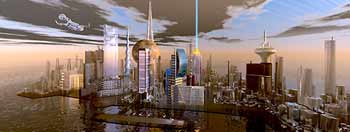 Architects are essentially artists in engineer bodies or vice versa. No one knows which—and does it matter? Mom shared with me later in life that she envisioned my becoming an architect one day. Guess I have.
Architects are essentially artists in engineer bodies or vice versa. No one knows which—and does it matter? Mom shared with me later in life that she envisioned my becoming an architect one day. Guess I have.
I don't do drafting in the strictest sense anymore. I do have two 6 foot drafting boards with drafting machines and sometimes go that route to flesh something out quickly. If it is found to have merit, then more detailed and complete drawings are in order. That's when a mode change is called for, because of the further benefits available. 3D and CAD programs are used now to great advantage. Having the traditional "pencil and slide rule" training as a basis, and being comfortable with digital technology, I quickly embraced the 3D world—once it became affordable that is.
Louis Henry Sullivan and his then assistant, Frank Lloyd Wright, coined and furthered the concept of "Form Follows Function":
"It is the pervading law of all things organic, and inorganic,
of all things physical and metaphysical,
of all things human and all things super-human,
of all true manifestations of the head, of the heart, of the soul, that the life is recognizable in its expression, that form ever follows function. This is the law."
To a large extent, this is still true; but in this age not always the case; at least as far as the design process is concerned. Sometimes the roles are reversed or, at the very least, intermixed and intertwined to some great degree.
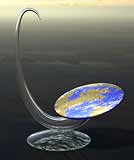
 All of our large artworks, and some smaller ones, are fully modeled prior to beginning work on them. We design for the aesthetic values first, while making sure that it will be successful in the physical world. No point in designing something that can't be built or, if built, not stand up as intended. By the same token, building something that works as it should and stands up, but isn't pleasing to the eye, isn't good either. Just like the stylists in the Design Center, we have full-scale models to be able to see into the future and make refinements to the design; both for how it will look and for how it will function. It makes for a better product.
All of our large artworks, and some smaller ones, are fully modeled prior to beginning work on them. We design for the aesthetic values first, while making sure that it will be successful in the physical world. No point in designing something that can't be built or, if built, not stand up as intended. By the same token, building something that works as it should and stands up, but isn't pleasing to the eye, isn't good either. Just like the stylists in the Design Center, we have full-scale models to be able to see into the future and make refinements to the design; both for how it will look and for how it will function. It makes for a better product.
Essentially, it's already built. We're "copying" it from the virtual into the physical; in much the same way that a painting is "copied" from out of our minds onto the canvas for others to see. While we are tackling a particular section, we can consult the 3D model for reference and to see just how large or how shaped a part must be in order to fit properly.
If need be, each part of the whole can be individually extracted and traditional orthographic projections generated if an outside contractor will be employed to make it. In that sense, I am still doing drafting but not in the traditional way or order.
Additionally, if we choose we can now animate our design "drawings" either to see them work or to see them from many points of view. Couldn't do that before.
Along the path, I learned that I was wired as an Artist and as an Engineer. If that counselor hadn't set me on a course other than the one I was on, would I have done the things that I have?
I truly have followed the message in my favorite poem; one that still chokes me up when reading aloud at my speaking engagements:The Road Not TakenTwo roads diverged in a yellow wood,
And sorry I could not travel both
And be one traveller, long I stood
And looked down one as far as I could
To where it bent in the undergrowth;Then took the other, as just as fair,
And having perhaps the better claim,
Because it was grassy and wanted wear;
Though as for that the passing there
Had worn them really about the same,And both that morning equally lay
In leaves no step had trodden black.
Oh, I kept the first for another day!
Yet knowing how way leads on to way,
I doubted if I should ever come back.I shall be telling this with a sigh
Somewhere ages and ages hence:
Two roads diverged in a wood, and I—
I took the one less traveled by,
And that has made all the difference....Robert Frost - 1915
Usually, about half way through, I can no longer read the page; but continue from memory. The poem as it relates to me is not about choosing art over engineering or vice versa. Taking the road less traveled by is about choosing both; which most people do not do, because they think it can't be done. Well, this and a lot of other brains attest to the fact that it can—and quite effectively.
There are plenty of areas in which to employ multi-disciplinary minds—in fact, it's essential to possess one in order to work in them. You'll discover them once you have chosen the road. Think about it. Disneyland wouldn't exist if it weren't for Imagineers, and people like us, to make things thought to be impossible come true.
Be a Renaissance Person. Some people will not understand and hate you for it, some people will recognize and identify immediately and love you for it; but the real choice is that you will love you for it and look back upon this fork in the road with warm fondness.
What's your take? Do you think in ways that others don't? Have you considered breaking out into something totally different; "going against the grain"? Let me know.
Tags: art and science, diversity, focus, perception
Short URL for this post: //spherical.org/s/5


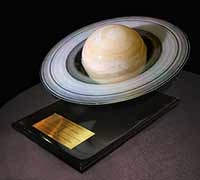

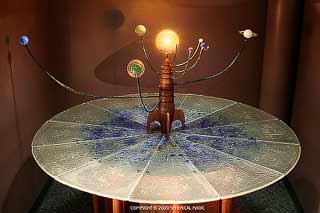
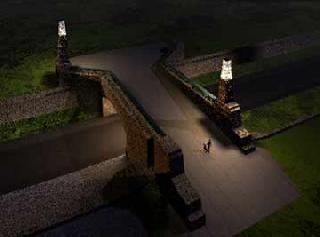
 RSS - Posts
RSS - Posts